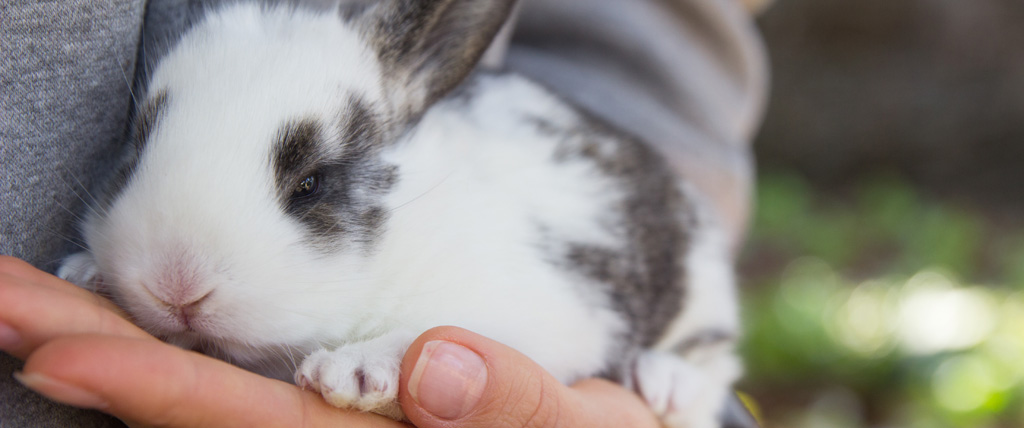What You Need To Know When Adding A Pet Rabbit To The Family
More and more people are discovering the joys of having rabbits as pets. With more than four dozen breeds of domesticated rabbit, these breeds range in size, coloring and energy level. Like dogs and cats, rabbits have their own personalities; some are playful, others more subdued. Some like to cuddle and play, and this is a great personality feature for folks who want a cuddly pet but don’t have time or interest in daily walks. Bunnies bond with their people and get to know them. Not all of them enjoy being picked up and carried, however, since they are prey animals. Contrary to some common beliefs, however, bunnies are not “starter” pets and require as much time and care as larger mammals.
Basic Care: Rabbits should have their own cage or crate so they have a safe space to sleep and chill out in. The cage should be at least three or four feet long. Many bunnies can be litter-trained; your rabbit’s “litterbox” can go in the corner of the cage the rabbit most often does their business in. In place of cat litter, use Timothy, Orchard Grass or Bromme hay. Please do not use pine, cedar, or clay litter for your rabbit.
Rabbits eat fresh grass hay and dark, leafy veggies. They need to have access to fresh, clean hay and water at all times. You can supplement your rabbit’s diet with prepared “rabbit food” but make sure this is of a high quality and even then limit the amount. Rabbits, like guinea pigs, have teeth that keep growing so chewing is essential for their dental health. Make sure they have a number of safe toys to chew on, and be careful about what they chew on when they are out of their cage—this is both for your sake and theirs!
Bunny Proofing and Exercise: Just like you would for a dog, a rabbit requires “rabbit proofing”–making sure your house is safe for them to explore. Rabbits like to chew, and if they have lots of toys to keep them occupied they may be less likely to nibble at your couch and other furniture. Rabbits seem drawn to electrical cords which can be dangerous; the House Rabbit Society website recommends covering these to prevent injury.
Some experienced rabbit-parents allow their bunnies to be free-roaming, meaning they aren’t crated and have the run of the house. This option isn’t for every household or every rabbit—if you adopt a rabbit you’ll have to get to know them before discerning if this path is right for you and your pet. Caged or not, your rabbit will need exercise; those legs were built to hop and run, after all. Let your rabbit have exercise- and play-time every day for optimal wellness. One of the best parts of rabbit ownership is the connection and bond you form with your pet and that bond is fostered through daily interaction.
Vet Care: According to the same HRS page as above, spaying and neutering a rabbit can decrease unwanted behaviors such as territory marking, meaning urine spraying and leaving “presents.” It can also decrease chewing and some aggressive behavior. It will also keep your rabbit from breeding like, well, a rabbit, which can be a concern if for multiple-rabbit households. The HRS site also has a list of veterinarians that are experts in rabbit care, since finding a vet who knows their rabbits is harder to come by than you’d think. This website is an excellent resource for learning more about keeping and caring for a house bunny.
Other Pets and Children: As this Petfinder article points out, rabbits are not actually very good pets for small children; they require gentle hands and more care than people often realize. Families with children shouldn’t feel they can’t get a rabbit, however, it’s just important to have an adult act as primary care-giver and to teach children to handle and care for the rabbit well. Rabbits can live 12 years, so adopting one is a long-term commitment.
Also, if you have other pets in the house it doesn’t necessarily mean a rabbit is a no-go. Depending on temperament and training, cats and dogs can coexist well with rabbits, given they are supervised. Introduce your rabbit to your other pets slowly and with care. Owning more than one rabbit can pose challenges, although generally spayed and neutered pairs of the opposite sex do better.
Adopt: According to this other Petfinder article, adopting a rabbit from a shelter is very doable, rather than purchasing one from a pet store or breeder. The page notes that, “in fact, after dogs and cats, rabbits are the third most abundant adoptable pet, with more than 4,800 listed for adoption on Petfinder.” That’s a lot of rabbits! Rabbits, like dogs and cats, all have their own personalities, and adopting one from a shelter or foster home will help you find the perfect match for you. Just as important, adopting gives a home to a rabbit without one; many people buy rabbits without understanding their care needs and then these little ones end up in shelters.
Rabbits can make cute, cuddly and smart pets. If you’re considering rabbit-ownership, be sure to make use of the wealth of information available before making the commitment to bring one into the family.
Other Recent Blog POsts

Uber-Style Dog Walkers vs. Local Pet Care Companies: Find the Perfect Fit
April 24, 2024
Landfill Biodegradable Poop Bags for a Greener Earth Day
April 18, 2024
Work From Home? Don’t Skip Dog Walks
April 10, 2024
Celebrating Floofins & Co.’s 14 Years Serving Chicagoland
April 4, 2024
Small Businesses Make Thriving Communities
March 11, 2024

